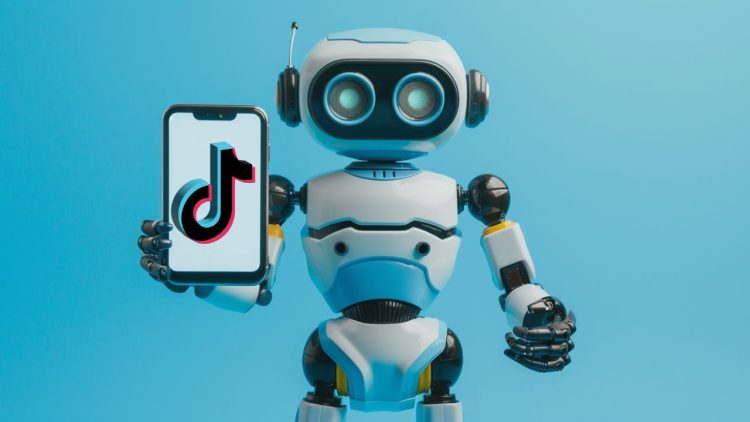TikTok announced on Thursday that it would begin using a digital watermark called Content Credentials to identify photos and videos uploaded to its video-sharing platform that was produced with Artificial Intelligence i.e. Generative AI.
Highlights:
- TikTok introduces a digital watermark called Content Credentials that will help it to identify AI generated photos and videos on its platform.
- This is a bold move before the US elections campaign, considering the widespread Deepfakes and Hallucinations circulating everywhere.
- Both the platform and the user must agree for the functionality. The marked image will be automatically tagged as AI-generated if it is later published to TikTok.
TikTok to label AI-generated content from OpenAI and elsewhere https://t.co/cymbMZgP7o pic.twitter.com/AGJxoXW2Ah
— Reuters U.S. News (@ReutersUS) May 10, 2024
Researchers are worried that AI-generated content might be exploited to sway the results of the US elections this fall. TikTok was one of 20 internet companies that earlier this year signed an agreement promising to combat this threat.
With Generative AI making its way to almost every content creation platform out there, platform users and moderators have been worried about the authenticity and veracity of generated content, and how it may possibly impact the future of these platforms.
So how is TikTok planning to become one of those platforms that puts into check the spread and use of AI-generated content by several users? What does it mean for content creators on TikTok? Let’s explore everything in this article.
TikTok is Moderating AI Generated Content
Soon TikTok users will see a watermark called Content Credentials that will help them identify photos and videos that have been generated with the help of Generative AI tools such as ChatGPT and Claude 3. With this modification, content made with OpenAI’s DALL·E 3 will automatically have a label that reads “AI-generated” to alert viewers that it was produced using AI when a creator uploads it to TikTok.
The latest approach will apply a label to movies and photos generated outside of the service. Currently, the business labels AI-generated material created with tools within the app.
The Coalition for Content Provenance and Authenticity, which was co-founded by Adobe, Microsoft, and other companies, led the development of the Content Credentials watermark. However, other companies are free to utilize this technology. Content Credentials enables TikTok to automatically identify and categorise AI-generated content by attaching particular metadata to it.
“We also have policies that prohibit realistic AI that is not labeled, so if realistic AI (generated contents) appears on the platform, then we will remove it as violating our community guidelines. By partnering with peers to label content across platforms, we’re making it easy for creators to responsibly explore AI-generated content, while continuing to deter the harmful or misleading AIGC that is prohibited on TikTok.”
Adam Presser, head of operations and trust and safety at TikTok, said in an interview.
A bold move from TikTok surely. This will highly help content creators and users find out whether a video is AI-generated or not. Nowadays many videos are showing up on TikTok with questionable authenticity, and the watermark will help detect just that. Consequently, even while TikTok promised to label AI material on its platform, the company is also working to make sure that AI video created on TikTok is appropriately labelled when shared on other platforms.
Recently Amazon also introduced a similar system called Watermark Detection API that helps to find out whether an image has been generated by Amazon’s Titan Image Generated. In the case of TikTok, videos alongside images are also included.
How does it Work?
The platform that delivers the material and the designer of the generative AI tool that creates it must both agree to follow the industry standard for the system to function. It is only with this cooperation that TikTok will be able to detect AI-generated videos, regardless of any platform.
For example, when someone uses OpenAI’s Dall-E tool to create an image, OpenAI adds data to the image that can later be used to detect whether the image has been modified and adds a watermark to the end result. Dall-E 3 is one of the most powerful image-generating AI tools out there and it can really help users in a variety of functions such as Inpainting and much more.
The marked image will be automatically tagged as AI-generated if it is later published to TikTok. Quite simple isn’t it? This simple mechanism has been designed to provide creators and users with the ease of verifying their content.
TikTok will also begin adding Content Credentials to AI-generated material produced on the platform with TikTok AI effects in the upcoming months. When the content is downloaded, the Content Credentials metadata, which contains information on the location and editing processes of the AI-generated content, will still be there. The material can be automatically identified as AI-generated by other platforms that have adopted material Credentials.
Conclusion
This is a great step from TikTok, toward safe and friendly content being circulated in their platform. With Generative AI, having its grasp on almost everything nowadays, TikTok has made a great move to provide relief to its users. The Content Credentials watermark detector will highly help creators worldwide verify the reality of TikTok videos circulating online, and if found to be AI-generated, then deal accordingly.








